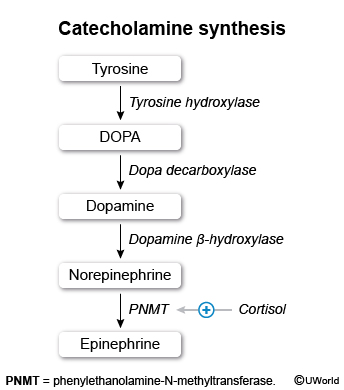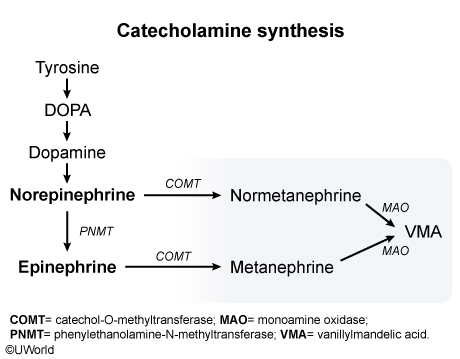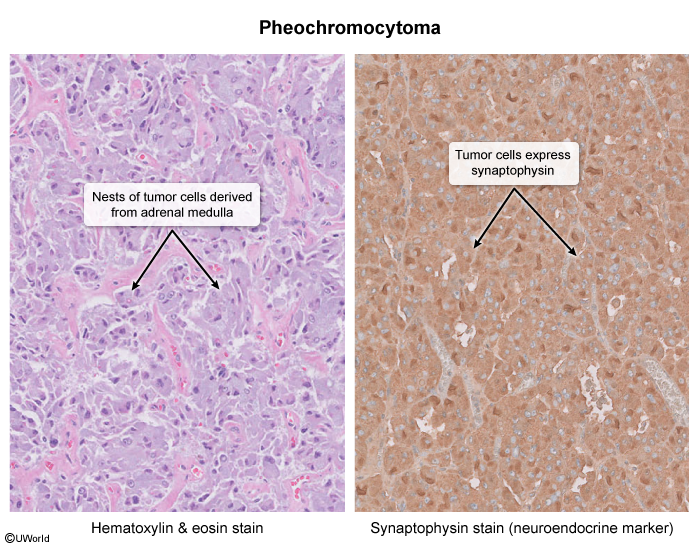Pheochromocytoma
Article Sections
Introduction
Pheochromocytomas are rare catecholamine-secreting tumors that secrete excess catecholamines, leading to potentially severe cardiovascular manifestations.
Pathophysiology
Pheochromocytomas arise from chromaffin cells of the adrenal medulla or from extraadrenal paraganglia (paraganglioma). Chromaffin cells are derived from neural crest cells, which are multipotent migratory cells that originate in the ectoderm at the margin of the neural tube and give rise to a diverse cell lineage. They are stimulated by acetylcholine released by sympathetic preganglionic neurons and secrete catecholamines (norepinephrine, epinephrine, dopamine) directly into the bloodstream to amplify sympathetic nervous system activity (Figure 1).
Pheochromocytomas can produce and release large quantities of catecholamines (eg, norepinephrine, epinephrine), which bind to alpha- and beta-adrenergic receptors, resulting in increased vascular resistance, tachycardia, and enhanced cardiac output. Excessive alpha-receptor stimulation can cause severe vasoconstriction, whereas beta-receptor stimulation may lead to arrhythmias and hypermetabolism. Catecholamine release may occur intermittently or in response to physical or emotional stress, anesthesia, or certain medications.
Continue Learning with UWorld
Get the full Pheochromocytoma article plus rich visuals, real-world cases, and in-depth insights from medical experts, all available through the UWorld Medical Library.
Figures


Images
